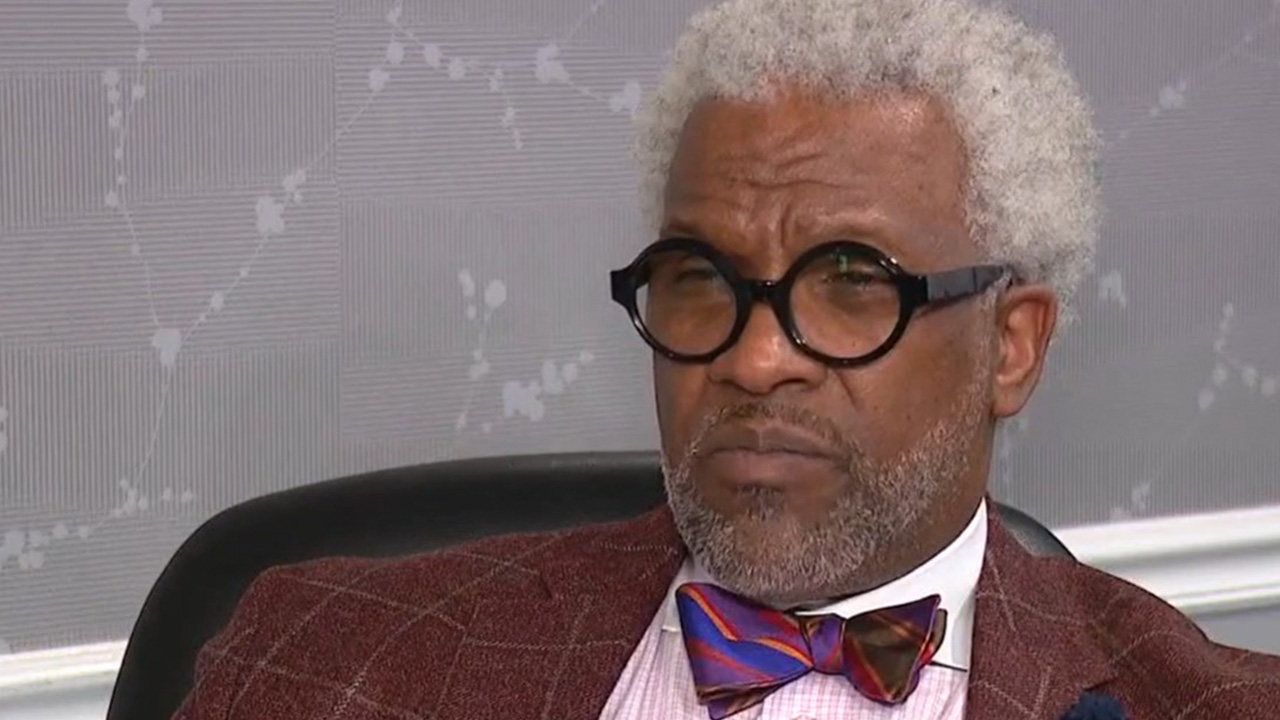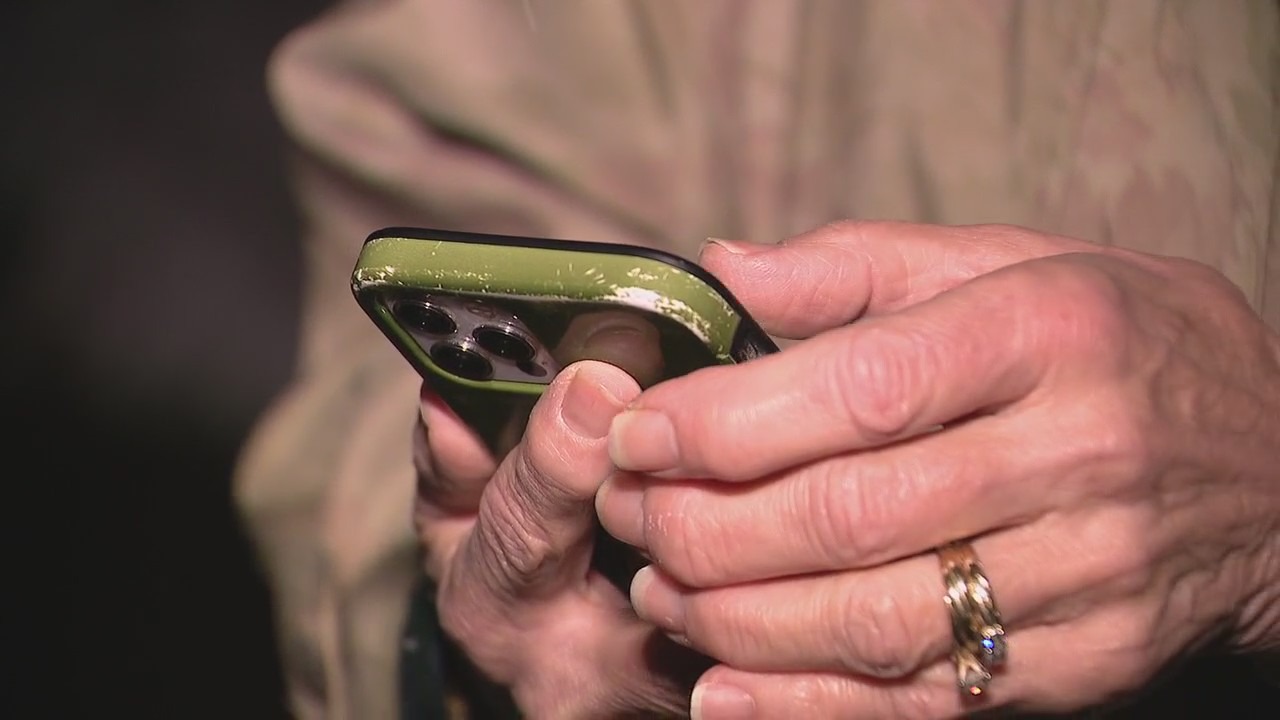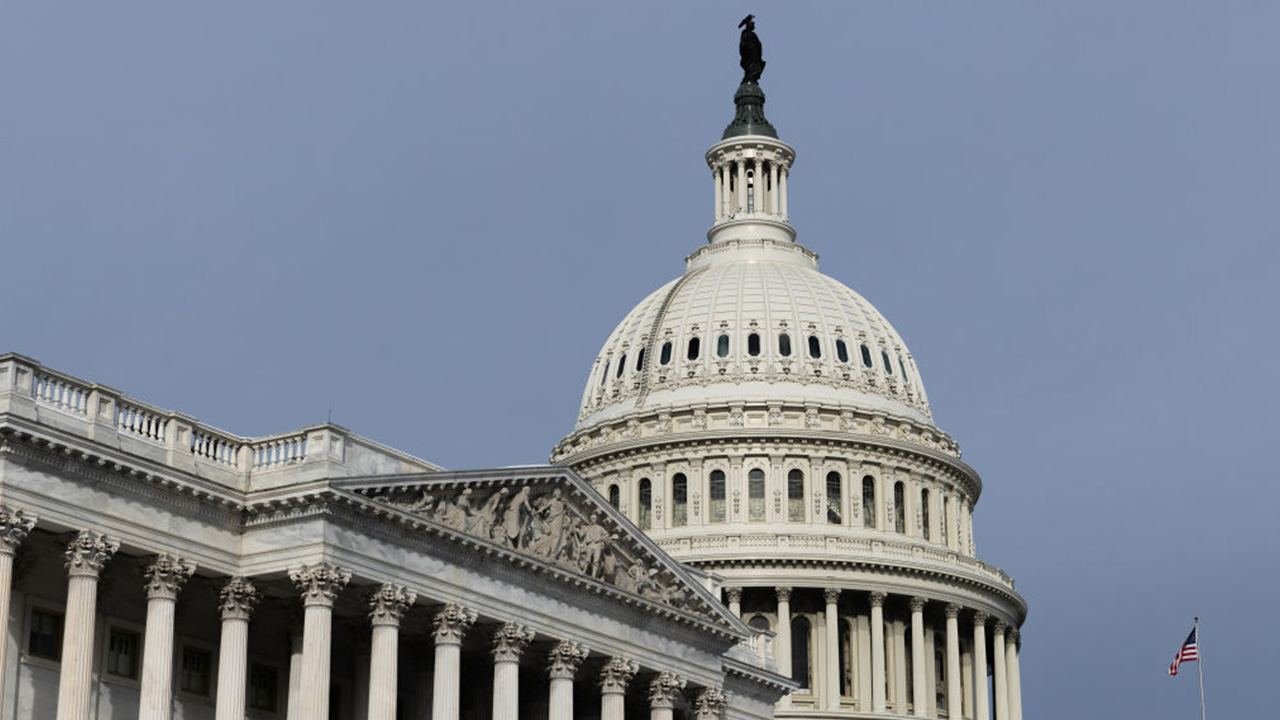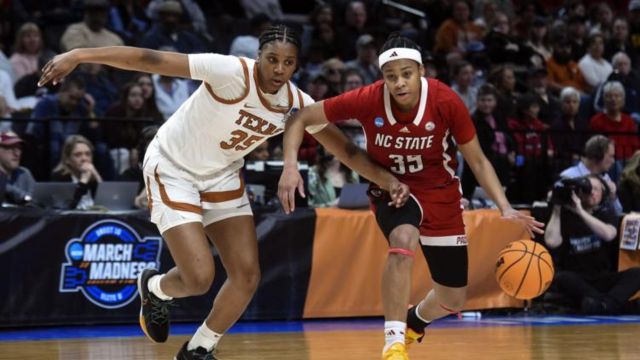NCAA Women’s Tournament Plays on Mismatched 3-point Lines
The 3-point line for the women’s NCAA Tournament at Moda Center had a disparity in distance at each end of the court that went unreported for four games over two days before Texas and North Carolina State were notified of the issue prior of their Elite Eight game on Sunday.
Instead of postponing Sunday’s game, the teams’ coaches opted to play it as scheduled with the uneven 3-point lines, according to the NCAA. North Carolina State defeated Texas 76-66 to advance to the Final Four.
“The NCAA was told on Sunday that the 3-point lines on the court at the Moda Center in Portland are not the same distance. The NCAA staff and women’s basketball committee representatives on-site spoke with the two head coaches, who were informed of the discrepancy. Lynn Holzman, the NCAA’s vice president of women’s basketball, said in a statement that all parties chose to play the entire game on the court as is, rather than fixing the surface and delaying the game.
Holzman stated that all lines would be measured after practices ended on Sunday evening, and the correct markings would be on the court before Monday’s game between Southern California and UConn.
“While the NCAA’s vendor has apologized for the error, we will look into how it occurred in the first place.” “The NCAA is currently working to ensure that all court markings are accurate for future games,” Holzman said. “We are not aware of any other issues at any of the prior sites for men’s or women’s tournament games.”
Connor Sports creates March Madness floors for both men and women.
“We apologize for the error that was found and have technicians on-site at the Moda Center in Portland who were instructed to make the necessary corrections immediately following (Sunday’s) game,” according to a statement sent by the organization.
The court issue was another distraction for the NCAA during a women’s tournament when the performance has been outstanding but other issues have taken center stage.
A referee was pulled from a first-round game at halftime. Utah endured racist harassment before their first-round game. Hannah Hidalgo of Notre Dame was forced to remove a nose ring and missed time during a Sweet 16 loss to Oregon State. LSU coach Kim Mulkey threatened to sue The Washington Post over an unpublished article of her, and she later chastised a Los Angeles Times columnist for sexist remarks about her squad. The Times responded by editing the column.
And now for the court case in Portland.
“I hate to say this, but I have a lot of colleagues that would say, ‘Only in women’s basketball,'” Texas coach Vic Schaefer said. “I mean, it’s a tremendous sad that it happened. But it is what it is.
Four Sweet 16 games were played on Friday and Saturday, with none of the competing teams openly mentioning a problem with the floor.
During pregame warmups, Schaefer and North Carolina State coach Wes Moore were notified that the 3-point line distance at the top of the key differed on both ends of the court. Moore stated the distance between the top of the key and the 3-point line was too short at the end in front of the North Carolina State bench, but the line at the Texas end was correct.
NCAA officials were asked to measure the distance, so they took out a tape measure around 15 minutes before tipoff. Following conversations with NCAA representatives, coaches, and officials, the game was played as planned.
A delay would have taken at least an hour, according to both coaches, because someone from outside would have had to be brought in to inspect the floor, potentially forcing the game to be moved from ABC’s schedule.
“That’s a big deal to be on ABC,” Moore added. “We’ve been fortunate to be on it a couple of times in the last few years.” But it’s a huge deal.”
Both coaches stated that their players were unaware of the difference, and N.C. State’s Aziaha James, in particular, had little issue making a career-high seven three-pointers on nine attempts. The NCAA stated that the court would be repaired before Monday’s Elite Eight game between Southern California and UConn.
“At the end of the day we had already played a game on it and we both won, so we just decided to play,” said Schaefer.
While the NCAA could not disclose specifics, one 3-point line near the top of the key appeared to be approximately 6 inches closer to the hoop than the opposite end of the court. The NCAA 3-point line measures 22 feet, 1 3/4 inches for both men and women.
The data revealed that players struggled with the line that was too close to the hoop.
Through five games, teams shooting from the closer 3-point arc were 25.8% (23 of 89) on 3s. That was right after the floor; teams shot 33.3% (29 of 87).
“These kids, they shoot so far behind it sometimes nowadays, who knows where the line is?” Moore stated. “This is an exceptional circumstance. But, as I previously stated, I’m not sure whether it was advantageous or disadvantageous.
Baylor coach Nicki Collen, whose team lost to USC in the Sweet 16, stated on social media that with eight teams at one location, the emphasis was on the game plan, not court appearance.
Baylor shot 6 of 14 3-pointers in the second half, all from the end of the court with the proper arc.
“Guess that’s why we shot better in the second half,” Collen wrote.










